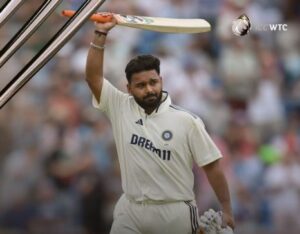For people in the newsroom, ‘breaking’ might mean myriads of things: good or bad, heartwarming or heartrending, depending on the character and connotation of the news. But there is a world beyond the newsroom. And in that space, ‘breaking’ means a celebration of culture amid the sound of soul-stirring drum beats in harmony with acrobatic moves. This breaking is also called ‘b-boying/b-girling’ and ‘breakdancing’, which is making its Olympic debut at Paris.
Breakdancing’s India connection runs deep
People in India will relate to the term ‘breakdancing’, which evokes – for those who grew up in the 1980s-90s – the incredible gyrations of Bollywood dancers Mithun Chakraborty and Prabhu Deva who enthralled the audience for years, making the dance form immensely popular with the young generation.
Remember the ‘Little Superstar‘ of Tamil film Adhisaya Piravi, released in 1990, whose ‘breakdancing’ video clip surfaced on YouTube in 2006 and became an instant hit? The clip from the Rajinikanth-starrer with actor E Shankar breakdancing to MC Miker G & DJ Sven’s ‘Holiday Rap’ not only confirms India’s ‘age-old’ stamp on the art but also flaunts its adulation. The video has since generated 19.4 M views.
Later, the TV dance-shows beaming into Indian households brought out a horde of breakdancing talents from across the country perfecting the moves. Now, India boasts of B-Boy dancers like B-Boy Flying Machine, aka Arif Chaudhary, who made it to the finals of Red Bull BC One, one of the biggest one-on-one B-Boy competitions in the world.
‘It’s not breakdancing, it’s break-boying’
B-Boy dancers detest calling it breakdancing. They accuse the media of ignorance and casualness for oversimplifying the art-form naming it breakdancing. The enthusiasts use the original term b-boying/b-girling or break-boying.
IOC grants Olympic status to b-boying
In 2024 Paris Olympics, they will call it breaking. The decision was taken on 7 December 2020, when the International Olympic Committee (IOC) chose to add breakdancing to the medal event program at the Paris Games. And so far what was considered art for an athletic style of dance became an official Olympic sport.
Created in the 1970s by the African American youth breakdancing is a form of street dance which emerged from the hip hop culture. With four kinds of jaw-dropping movements (toprock, downrock, power moves and freezes) breakdancing is usually set to a range of funky drumbeat music. The dance form gradually gained popularity turning into a culture, spreading to other communities in the United States and across the world.
How breakdancing broke new ground
In 1990, the first international breaking competition called ‘Battle of the Year’ was held in Germany. Following which, over the years, several breaking competitions were created, with even women joining the race in recent years.
Breakdancing became a part of movies in the 1970s, soon after it began to gain ground in the US. Then dance shows were launched on TV; novels and comics were written on its theme and video games were designed to tap into its success. However, the antecedents of breakdancing have been traced to various other cultures. Which pioneers like Richard ‘Crazy Legs’ Colon and Kenneth ‘Ken Swift’ Gabbert admitted to naming singer and dancer James Brown and Kung Fu films as their influences.
From street to Olympics stage: History in the making
Finally, granting Olympic status to breakdancing, the IOC has created history for b-boys, b-girls and dancers from around the world. In Paris games, 16 b-boys (and an equal number of b-girls) will be face to face in the battle for the medals, luring a young audience to the Olympics. Just like the 2018 Youth Olympics in Buenos Aires, when over 30,000 people attended the three medal events each day.











Rishabh Pant reprimanded by ICC: What happened at Headingley?
Virat Kohli gets emotional: Tears of joy as RCB clinches IPL title!
Virat Kohli announces retirement from Test Cricket